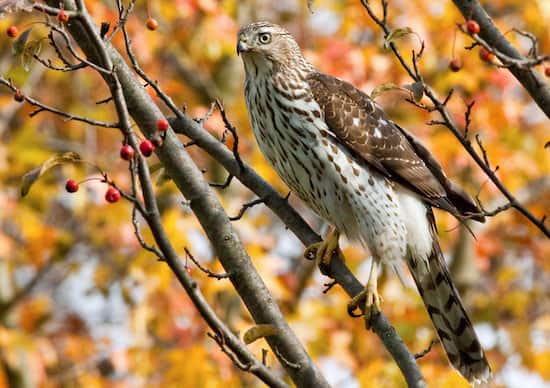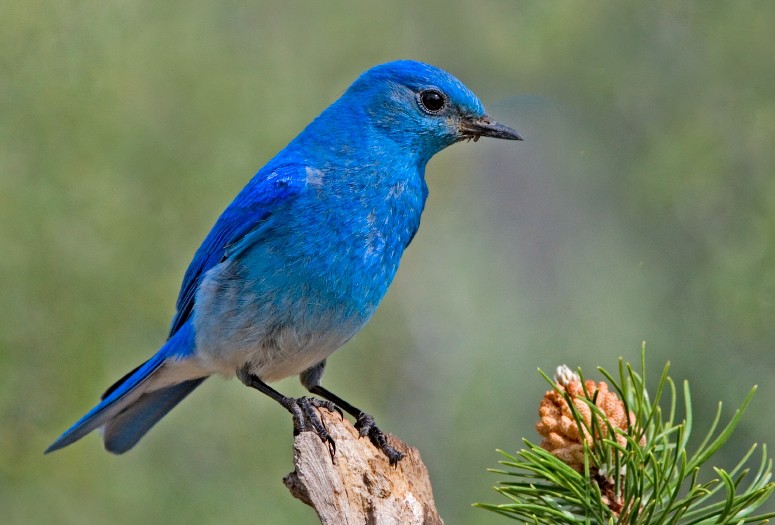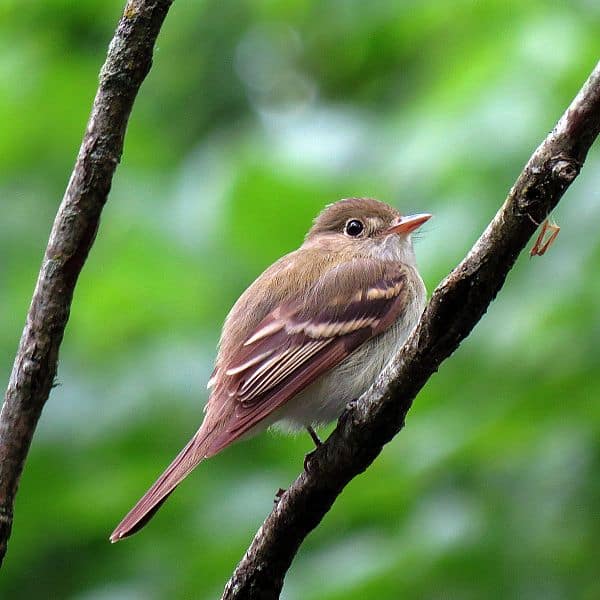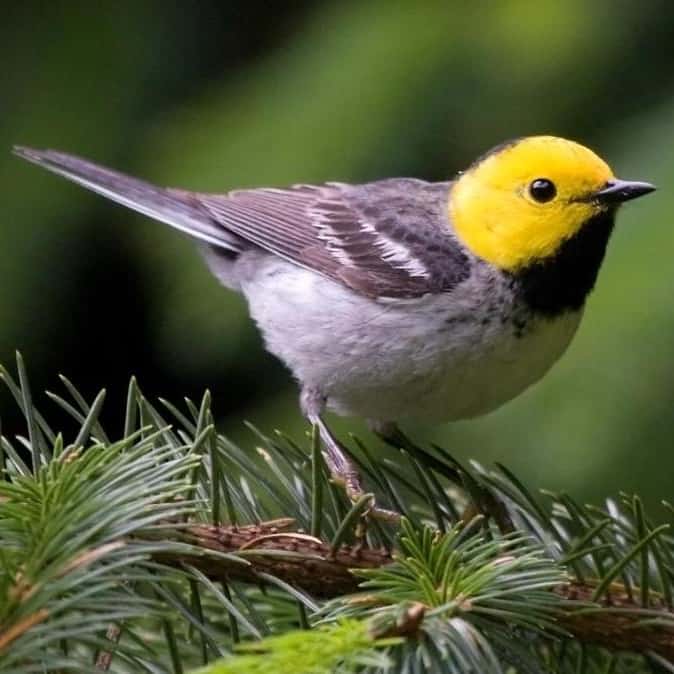Care must be taken to differentiate the Cooper’s hawk from the similar sharp-shinned hawk. Adults of both species have similar markings, as do their brown-backed immatures and that of the northern goshawk (larger birds rarely seen south of Virginia, Indiana, and Missouri). Size is often not a trustworthy identification tool in the field—proportions and tail edges are more telling.
Compared with the sharp-shinned hawk, the Cooper’s has a proportionately larger head and neck and a rounded (not notched) or square-tipped tail (as does the sharp-shinned). Perched, adult Cooper’s hawks often show a contrast between a blackish crown and gray nape and back.
In flight, its head protrudes well beyond its often straight-held wings, and its tail usually looks rounded. Sharp-shinned hawks look like a capital “T” in flight, their shorter heads almost even with the leading edge of their wings.
Listen for
Not very vocal except when disturbed near the nest; then it utters a flicker-like ka-ka-ka-ka.
Find it
Cooper’s hawks often perch in inconspicuous places, shooting through the branches or dropping from trees to nab unsuspecting prey. A flurry of fearful birds and a gray flash may mark the arrival of a Cooper’s hawk to your backyard. Cooper’s hawks are medium-sized hawks and formidable hunters that are usually seen singly except during migration, when they pass by in varying numbers at hawk-watching spots. In many areas, Cooper’s hawks are uncommon nesters.
Far-northern birds generally winter to the south. You can look for Cooper’s hawks in any type of forest, along forest edges, and in woods near watercourses. But don’t be surprised if you find one elsewhere, particularly in winter and fall. They seem to be adapting to suburban life, nesting near backyards or in city parks. During spring and fall, migrating Cooper’’s hawks gravitate toward ridges and coasts.
Feed it
These midsized hawks generally feed on midsized birds, including robins, flickers, and pigeons, but they also eat small mammals, including chipmunks and squirrels. Insects and reptiles sometimes feature on the menu.
Nesting Behavior
Cooper’s hawks place their bulky stick nests high on horizontal branches in large trees, sometimes building them atop another large bird or squirrel nest. The female lays three to five eggs and incubates them for about five weeks. The male brings food, but the female feeds it to the young, which usually take flight about four or five weeks after hatching.
WOW!
To keep the element of surprise on their side, Coops and Sharpies will spiral high to dive on unsuspecting birds. The birds below cannot see the predator coming out of the sun.
Listen to a Cooper’s Hawk:




